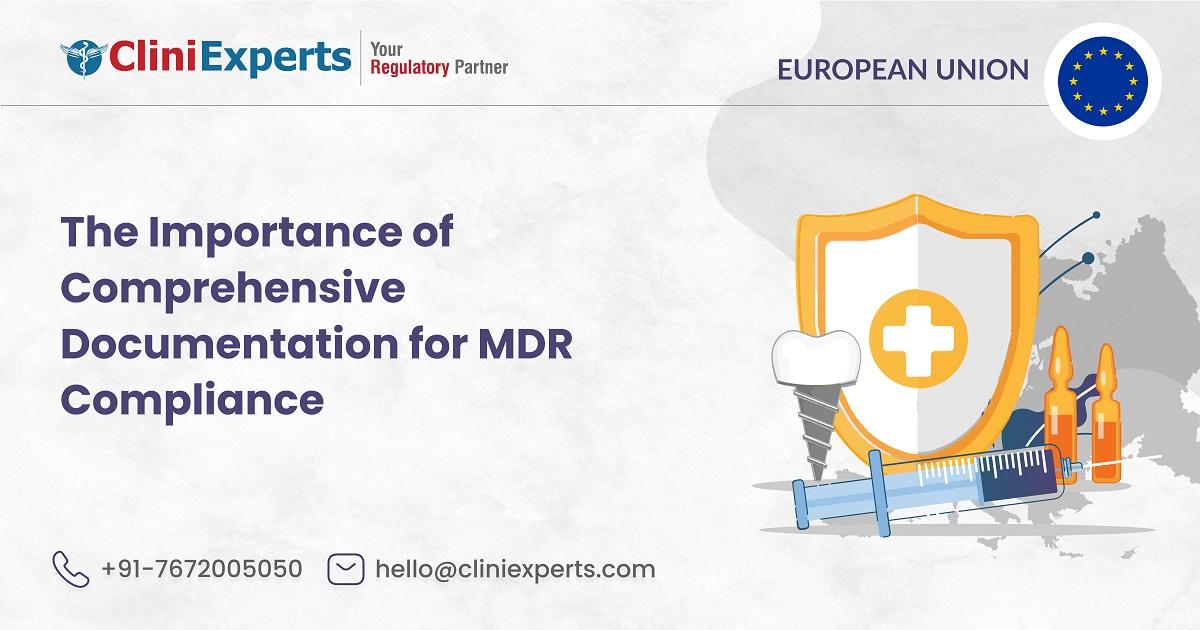In the dynamic landscape of medical device regulation, comprehensive documentation emerges as a cornerstone for MDR Compliance, fostering transparency, traceability, and accountability throughout the entire lifecycle of medical devices. This article delves into the pivotal significance of thorough documentation, shedding light on its indispensable role in affirming adherence to safety and performance standards, thereby expediting regulatory approval processes and nurturing public confidence.
Introduction:
With the enforcement of the Medical Device Regulation (MDR) on 26th May 2017, succeeding the Medical Devices Directive (MDD), manufacturers were mandated to align their technical documentation with the MDR by 26th May 2020, to secure or renew CE certificates or issue Declarations of Conformity (DoC). This regulation, a fundamental shift from previous directives, underscores a stringent approach towards ensuring the safety, efficacy, and performance of medical devices. However, amidst the emphasis on rigorous testing and risk management, documentation emerges as a focal point deserving utmost attention.
Key Elements of Technical Documentation for MDR Compliance:
· Evidence of Conformity: Technical documentation serves as concrete evidence of a medical device's compliance with safety and performance requisites, encompassing comprehensive details regarding its design, manufacturing processes, risk assessments, and clinical evaluations.
· Post-Market Surveillance Plan: Manufacturers are obligated to delineate strategies for monitoring a device's performance post-market, ensuring sustained safety and efficacy.
· Conformity Assessment: The MDR mandates meticulous review of technical documentation by Competent Authorities (CAs) and Notified Bodies (NBs), highlighting the imperative of clear and organized documentation.
· Authorized Representatives: Documentation must include pertinent information regarding designated authorized representatives within the EU.
· Archiving Periods: Manufacturers must adhere to stipulated archiving periods for technical documentation to ensure seamless traceability and accountability.
MDR Compliance: A Documentation-Driven Process:
Embracing a risk-based classification system for medical devices, the MDR necessitates varying levels of documentation contingent upon a device's classification (Class I, Class IIa, Class IIb, or Class III). Nevertheless, a robust documentation system remains non-negotiable for a successful MDR compliance strategy. Mandated to establish and maintain a documented Quality Management System (QMS), manufacturers are tasked with documenting procedures, processes, and records spanning the device's lifecycle, from design and development to manufacturing, post-market surveillance, and potential corrective actions.
Advantages of Comprehensive Documentation:
· Stronger Regulatory Application: Meticulously organized and complete technical documentation demonstrates comprehension of medical device registration EU requirements and implementation of a robust QMS, bolstering the application for a CE marking certificate and expediting approval processes.
· Facilitated Audits: Comprehensive documentation ensures the availability of requisite records during regular audits by NBs, fostering a smoother and less daunting audit experience.
· Improved Risk Management: Detailed documentation of risk management activities fosters a proactive approach towards safety, enabling early identification and mitigation of potential risks, thereby minimizing post-market issues.
· Enhanced Traceability: Thorough documentation facilitates seamless traceability throughout the device's lifecycle, empowering effective tracking of components, materials, and production processes, ensuring stringent quality control and facilitating prompt corrective actions if necessary.
Conclusion:
In essence, technical documentation transcends mere paperwork in the realm of medical device registration EU; it emerges as a critical linchpin of MDR compliance. Properly documented evidence not only substantiates adherence to safety and performance standards but also engenders confidence among manufacturers, regulatory authorities, and patients alike, underscoring the paramount importance of well-organized and transparent documentation.


